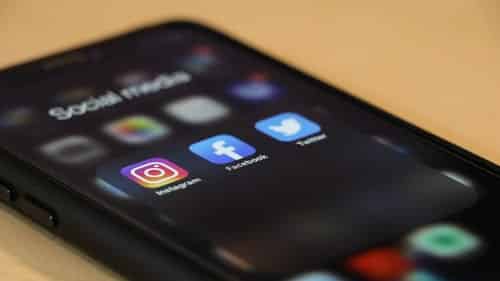How can UK’s educational institutions enhance remote learning with mixed reality technologies?

In a world where technological advancements are leading at a rapid pace, the education sector in the United Kingdom has witnessed a transformative change. The advent of mixed reality technologies including virtual reality (VR) and augmented reality (AR) has introduced innovative methods to enhance remote learning. These immersive tools offer students an engaging and interactive learning experience that can revolutionize traditional teaching methods. This article explores how UK’s educational institutions can leverage these technologies to improve remote learning, thereby offering students a more comprehensive and immersive educational experience.
Embracing Immersive Technologies in Remote Learning
Educational institutions across the UK are constantly seeking ways to make remote learning more effective and engaging. Integrating mixed reality technologies into the curriculum is a significant step towards achieving this goal. Virtual reality and augmented reality are no longer confined to gaming but have found a place in education, providing students with immersive learning experiences that can vastly enhance their understanding and retention of information.
A lire aussi : What are the key considerations for developing scalable cloud solutions for UK’s public sector?
Virtual reality allows students to step into a completely virtual environment, offering them the opportunity to explore scenarios that would otherwise be impossible in a physical classroom. Imagine students being able to take a virtual tour of ancient Rome, participate in a simulated surgery, or explore the depths of the ocean—all from the safety and comfort of their homes. This level of immersion can make learning not only more exciting but also more memorable.
On the other hand, augmented reality overlays digital information onto the real world, enriching the student's environment with interactive and informative elements. For instance, students studying biology can use AR to see a 3D model of the human heart in their living room, or history students can view historical events unfolding in their immediate surroundings. These educational experiences are far more engaging than traditional textbooks and lectures.
Cela peut vous intéresser : What detailed steps can improve cybersecurity for UK's telehealth services?
Enhancing Teaching Methods and Learning Outcomes
Educators play a crucial role in the successful implementation of mixed reality technologies in remote learning. By incorporating these tools into their teaching methods, teachers can deliver content in a more dynamic and interactive manner, making it easier for students to grasp complex concepts. Immersive technologies can also cater to different learning styles, ensuring that all students are able to learn effectively.
For instance, virtual reality can be used to create virtual field trips, allowing students to explore different parts of the world without leaving their homes. This can be particularly beneficial for subjects like geography, history, and science, where visual and experiential learning can significantly enhance understanding. Similarly, augmented reality can be used to bring textbooks to life, with interactive elements that can help students better understand the material.
Moreover, the use of mixed reality in education can help improve student engagement and motivation. Students are more likely to stay focused and interested when they are actively participating in their learning experience. This can lead to better learning outcomes and higher retention rates.
Teachers can also benefit from mixed reality technologies. These tools can help them create more engaging and interactive lessons, making their job easier and more enjoyable. Educators can use VR and AR to create simulations and interactive models that can help students better understand complex concepts. Additionally, mixed reality can provide teachers with valuable insights into student performance, allowing them to tailor their teaching methods to better meet the needs of their students.
Overcoming Challenges and Ensuring Inclusivity
While the benefits of mixed reality technologies in remote learning are clear, there are also challenges that need to be addressed. One of the main challenges is ensuring that all students have access to the necessary technology. Not all households have the financial means to invest in VR headsets or AR-enabled devices, which can create a digital divide.
Educational institutions need to find ways to make these technologies accessible to all students. This could involve providing students with the necessary equipment or finding affordable alternatives that can still deliver immersive learning experiences. Additionally, institutions need to ensure that teachers are properly trained in using these technologies, so they can effectively integrate them into their teaching methods.
Another challenge is maintaining a balance between virtual and real-world experiences. While mixed reality can provide students with unique learning experiences, it is important not to completely replace traditional education methods. Teachers need to find a way to blend virtual and physical learning in a way that complements each other, ensuring that students receive a well-rounded education.
Moreover, inclusivity is paramount. Educational institutions must ensure that students with disabilities are not left behind. Mixed reality technologies should be designed to be accessible to all students, regardless of their physical or cognitive abilities. This can involve creating content that is adaptable to different needs or developing specialized tools that can help students with disabilities participate in immersive learning experiences.
The Future of Mixed Reality in Higher Education
As technology continues to evolve, the potential for mixed reality in higher education is vast. Universities and colleges in the UK can leverage these technologies to offer students a more engaging and interactive learning experience, preparing them for the challenges of the modern world.
For example, virtual reality can be used in medical schools to simulate surgeries, giving students a hands-on experience without the risk associated with real surgeries. Engineering students can use VR to design and test prototypes in a virtual environment, allowing them to experiment and innovate without the constraints of the physical world.
Similarly, augmented reality can be used to enhance learning environments by providing students with interactive and informative content. For instance, AR can be used to create interactive textbooks, where students can view 3D models, videos, and other multimedia content that can help them better understand the material.
Moreover, the use of mixed reality in higher education can also help bridge the gap between theory and practice. By providing students with immersive learning experiences, universities and colleges can help them develop the practical skills they need to succeed in their careers. This can also make learning more relevant and engaging, as students can see the real-world applications of what they are studying.
In conclusion, mixed reality technologies offer a wealth of opportunities for UK's educational institutions to enhance remote learning. By embracing virtual reality and augmented reality, educators can provide students with immersive learning experiences that can significantly improve their understanding and retention of information. These technologies can also help teachers create more engaging and interactive lessons, leading to better learning outcomes.
However, it is essential to address the challenges associated with implementing mixed reality in remote learning. Educational institutions must ensure that all students have access to the necessary technology and that teachers are properly trained in using these tools. Inclusivity must also be a priority, ensuring that students with disabilities can participate in immersive learning experiences.
As technology continues to evolve, the potential for mixed reality in education is immense. By leveraging these technologies, educational institutions in the UK can offer students a more engaging and interactive learning experience, preparing them for the challenges of the modern world. The future of education lies in the integration of immersive technologies, and it is up to educators and institutions to embrace this change and harness its potential to enhance remote learning.
